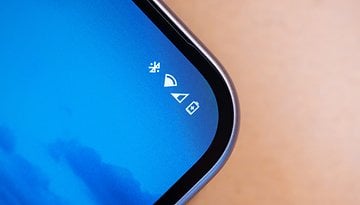Will you ever need a 4k display on your smartphone?


In the last couple of months, smartphones with 4k displays have begun leaking here and there. They’re not ‘big name’ phones, but they will tell us a lot about how ready modern batteries and tech are to run the demanding resolution. They also make it a good time to question whether your smartphone will ever really need a 4k display. Read on for our thoughts.
- Best Android phones of 2015
- Full HD vs Quad HD vs 4k explained
Back in April, Sharp announced the 5.5-inch IGZO 4k display, potentially destined for its AQUOS phone line. A mere couple of months later, the ZTE Star 3 was announced by its Chinese manufacturer - a 5.5-inch Android phone with a 3840 x 2160 screen. The Sharp and ZTE displays are expected to pack 806 and 808 pixels per inch, respectively, marking a new frontier in smartphone display fidelity.

Casting aside the battery issues that are likely to plague early 4k phones, endowing them with 4k displays is an incredible achievement - a marker of how quickly technology’s progressing. But beyond the milestone and bragging rights, will a 4k display on a phone make any practical difference to your smartphone experience?
All the signs point to the answer being ‘No’. Way back when Apple unveiled the iPhone 4, Steve Jobs said that there was no need for a smartphone resolution to be higher than 300 ppi for individual pixels to become unnoticeable. While Galaxy S6 owners with their near-600 ppi resolutions may scoff at this, Apple has more or less stuck to its guns, with the iPhone 6 featuring a 326 ppi display, and the iPhone 6 Plus a 401 ppi display.
The visibility of pixels also depends on your eyesight and how far you hold the phone from your face. LG for example, came to the conclusion when testing the LG G3 that adults in their 20s to 30s who hold their phones 20 to 25 cm from their faces could distinguish pixel densities of between 500 and 550 ppi. The fact that LG stuck with the same resolution for the LG G4 suggests they stand by these figures (or that a 4k display is too much of a battery drain for now).

Raymond Soneira, CEO of DisplayMate Technologies, went into more detail on how the human eye detects resolutions:
"The resolution of the retina is in angular measure - it's 50 Cycles Per Degree," he told PC Mag. "A cycle is a line pair, which is two pixels, so the angular resolution of the eye is 0.6 arc minutes per pixel”.
"So, if you hold an iPhone at the typical 12 inches from your eyes that works out to 477 pixels per inch [that’s visible to the human eye]. At 8 inches it's 716 ppi. You have to hold it out 18 inches before it falls to 318 ppi.” Similarly to LG, he concluded that holding a phone at a normal distance from your face makes pixels indiscernible at 500 - 600 ppi.
Even with today’s 2K/QHD resolutions, you need to venture into 6-inch ‘phablet’ territory to appreciate the difference between that and good old 1080p resolutions. Based on this year’s flagships, it looks like 5 - 5.5 inches is the sweetspot for smartphone sizes, so from an end-user perspective, it's hard to argue for why we should need 4k displays on phones.

But the smartphone market is driven in part by what consumers want, and in another part by tech companies looking to get one up on their rivals. While I’ve tended to praise 2015 flagships that opted for 1080p resolutions rather than QHD, manufacturers like HTC, Huawei and Sony will still feel the pressure to bolster their resolutions to match the likes of Samsung and LG. For better or worse, a high resolution is a status symbol for manufacturers, and they'll all get sucked into the display fray sooner or later.
While we welcome forays into new tech, there are more important issues that need to be addressed with smartphones, like battery problems and overheating - both of these issues will be harder to tackle if the smartphone market becomes fixated on attaining superfluously high resolutions.
Do you think 4K displays on smartphones are a step too far, or would you welcome them? Let us know.














I'd welcome it, really, cause i like playing super hd games but dude, this will be needing more battery that mostly they wont give to us. i mean, that s6 is a blast except battery is kinda dumb. you need to charge it so often that its better to be just plugged all the time specially when you rely on it so much like me. But, its a nice phone to be honest. But id be willing to add another 100 dollars for the batt. 4k, yea sure, but, battery as well.
Exactly. A higher resolution is needed for some current and future features like glassless wide-angled 3D and indeed virtual reality in an acceptable resolution. So I'm afraid as well that the author kinda missed (at least a part of) the essence of upping the resolution.
Yup, the writer like many others are just still clueless. Yes 4k would be very welcome for vr. Very cinema would benefit greatly. But clearly this article is not keeping up with the latest tech
I'm afraid you've completely missed the point. 4K display is for phones running virtual reality, like the Gear VR running on the Samsung Galaxy. And you really need 8K before the pixilation disappears in that scenario. In 1080 you get the so called low res 'screen door effect' which makes it look rubbish.